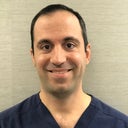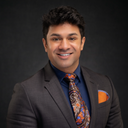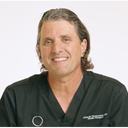To help you understand why, let's analyze what is going on with your upper eyelids and eyebrows. There is no substitute for an in person consultation. You have bilateral upper eyelid ptosis with redundant upper eyelid creases and a relatively hollow and high upper eyelid sulcus. There is also a compensatory eyebrow elevation. You basically have an innie eyelid which I call a synform fold eyelid. You have upper eyelid lash ptosis. You have relatively long eyelashes. If you are using an eyelash growth serum on either your eyelashes or eyebrows, stop this immediately. These product kill eyelid and eyebrow fat. Standard blepharoplasty, and many eyelid surgeons would perform standard blepharoplasty, will not address your issues. Standard blepharoplasty removes skin, muscle, and fat. This will skeletonize your upper eyelid by removing the skin of the upper eyelid fold in a misguided effort to "clean up" your upper eyelids. It does not address your upper eyelid ptosis. Your upper eyelid is relatively hollow most likely due to a central levator disinsertion that is also causing the upper eyelid ptosis. With the retraction of the levator aponeurosis into the anterior orbit, anterior orbital fat that normal contributes volume to the upper eyelid fold, also retracts back into the orbit. An upper eyelid fold gets volume from one other source and that is the skirt of fat that hangs down from the eyebrow area. Upper eyelid ptosis stimulates the frontalis muscles to raise the eyebrows. That means that this modest contribution to the upper eyelid fold is not available making the upper eyelid fold appear more depleted. The best solution to your issue is to not skeletonize the upper eyelid (which will suddenly make you look much older) rather the best solution is to fix the upper eyelid ptosis and restore the volume to the upper eyelid fold, you will also benefit from an anchor blepharoplasty. At consultation, you also need to be assessed for lateral canthoplasty which might also need to be part of your restorative eyelid surgery. This type of surgery is best done under light intravenous sedation. Do not get the wrong surgery. Fixing a stardard blepharoplasty is never as good as getting the right surgery in the first place. Your eyes can be your best feature.






